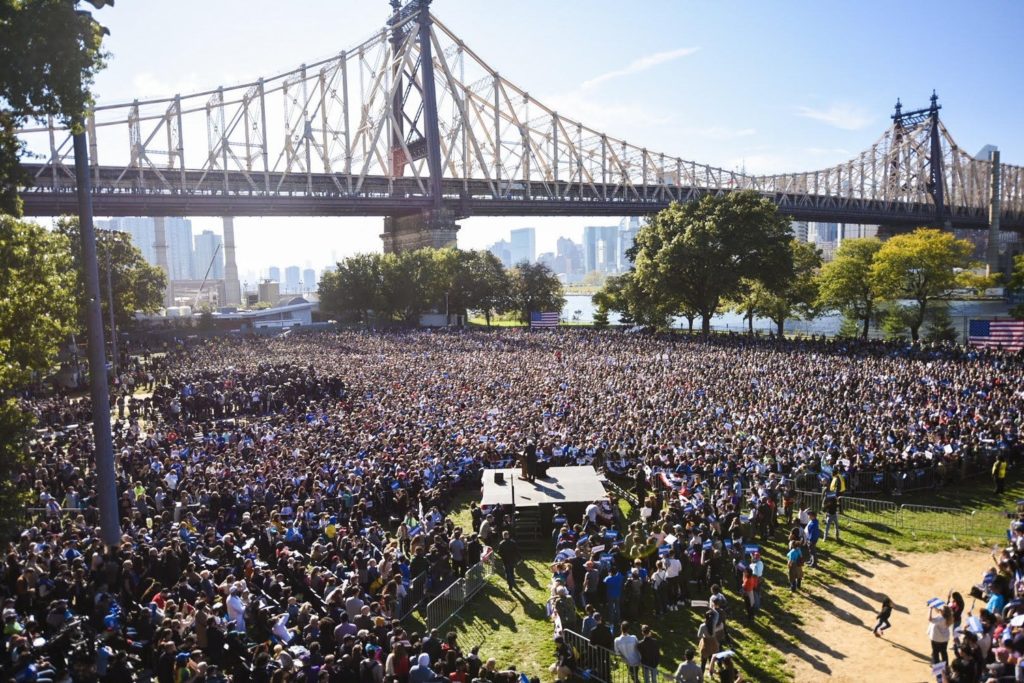The breakdown of the Reagan era party system began in earnest with Trump’s nomination in 2016 and could achieve full realignment as early as Bernie’s nomination in just a few short months.
With a flurry of last minute polls indicating a strong surge for Bernie Sanders, this Iowa Caucus day in 2020 has pundits and Democratic Party elders on the edge of their seats.
Everyone from Hillary to the MSNBC talking heads and even John Kerry have expressed some form of concern, frustration, and/or bitterness at Bernie’s continued success despite (and in part because of) the constant attacks coming from the right wing of the party.
While the conservative half of Democrats have long held control of the party apparatus since even before the days of Reagan, they’re all suddenly waking up to the fact that their days may in fact be numbered.
And that number of days is getting pretty small…
A decade ago, I posted about a few of the fault lines that American politics could break down on – and how the rickety alliances looked in that moment of frustration. My specific argument was that the “middle” wasn’t particularly moderate, but rather more in tow with the right wing. That argument would’ve been a little radical at the time, but the rapid allegiance “moderate” Republicans have paid to Trump shows how quickly that center coalition could evaporate.
In late 2016, the handful of Republican never-Trumpers woke up to a nightmare that the Third Way Democrats have recently joined in realizing. Without the leverage of moderate Republicans, moderate Democrats have now found themselves without any significant political allies.
The left has actually grown in the past decade, largely fueled by the generational replacement of Silents with Millennial voters. Framing public services as universal entitlements as opposed to means tested bureaucracy has also helped to win over some undecided voters to the left side of the debate.
If Bernie wins tonight in Iowa, and if that lead continues through New Hampshire and builds momentum in the races that follow, the primary could end very quickly as rivals run out of funding and volunteer enthusiasm.
So where does that leave the party’s elders? The pundits? The bundlers, PAC leaders, and think-tank executives?
Well, they’ll need to adapt really fast, build a new coalition overnight, or find a new line of work. Losing control of a bipartisan coalition and then losing control of each party will leave these 1990s relics as an anachronism in the 2020s.
